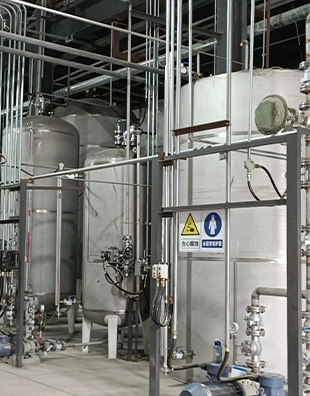corrosion scale inhibitor
Corrosion Scale Inhibitors A Comprehensive Overview
Corrosion is a natural process that involves the deterioration of materials, especially metals, as a result of chemical reactions with their environment. This phenomenon can lead to significant economic losses and safety hazards, particularly in industries such as oil and gas, power generation, and water treatment. To combat corrosion, various strategies are employed, among which corrosion scale inhibitors play a crucial role.
Corrosion scale inhibitors are chemical additives designed to prevent or reduce the rate of corrosion by forming a protective layer on metal surfaces or by modifying the environment in which the metal operates. They are particularly important in systems where water or other corrosive fluids are present, as these fluids can facilitate electrochemical reactions that accelerate metal degradation.
Mechanisms of Action
The effectiveness of corrosion inhibitors largely depends on their mode of action. There are various mechanisms through which these inhibitors operate
1. Adsorption Many corrosion inhibitors work by adsorbing onto the metal surface, forming a barrier that shields the metal from corrosive agents. This barrier can be a monolayer or a multilayer, depending on the chemical structure of the inhibitor.
2. Passivation Some inhibitors promote the formation of a passive oxide layer on the surface of the metal. This layer can significantly reduce the interaction between the metal and the corrosive environment, providing long-lasting protection.
3. Chemical Reaction Certain inhibitors undergo a chemical reaction to form stable compounds that can inhibit corrosion. These compounds might bind with metal ions or other corrosive agents, effectively neutralizing their harmful effects.
Types of Corrosion Inhibitors
Corrosion scale inhibitors can be categorized based on their chemical composition and mode of action
- Anionic Inhibitors These are negatively charged species that can adsorb onto the positively charged metal surface. Common examples include phosphate and silicate compounds.
corrosion scale inhibitor

- Cationic Inhibitors Positively charged inhibitors, such as quaternary ammonium compounds, can also provide effective corrosion protection. They often work well in acidic environments.
- Non-ionic Inhibitors These inhibitors do not possess a net charge and include organic molecules, such as amines and phenols, which can effectively adsorb onto metal surfaces
.Applications
Corrosion scale inhibitors find applications across various industries
- Oil and Gas In the oil and gas sector, corrosion inhibitors are vital for protecting pipelines and equipment from the corrosive effects of oil, water, and gas produced during extraction and processing.
- Water Treatment In municipal water treatment facilities, scale inhibitors help prevent the build-up of mineral deposits and corrosion in pipes, ensuring the efficiency and longevity of infrastructure.
- Power Generation Power plants utilize corrosion inhibiting strategies in cooling water systems to protect heat exchangers and other critical components from corrosive damage.
Environmental Considerations
While corrosion inhibitors play a significant role in protecting materials, there are growing concerns regarding their environmental impact. Many traditional inhibitors can be toxic to aquatic life and may contribute to environmental degradation. As a result, there is an increasing shift towards eco-friendly and biodegradable corrosion inhibitors, which can provide adequate protection without harming the ecosystem.
Conclusion
In summary, corrosion scale inhibitors are essential in mitigating the effects of corrosion across various industries. By understanding the mechanisms of action and selecting the appropriate type of inhibitor, businesses can significantly reduce maintenance costs, enhance safety, and extend the lifespan of their assets. As technology advances, the focus on developing sustainable and environmentally friendly inhibitors will likely shape the future of corrosion management, benefiting both industry and the environment alike.
-
Premium Isothiazolinones | Broad-Spectrum Biocidal SolutionsNewsAug.28,2025
-
LK-319 Special Scale And Corrosion Inhibitor For Steel Plants: Advanced Solutions for Industrial Water SystemsNewsAug.22,2025
-
Flocculant Water Treatment: Essential Chemical Solutions for Purification ProcessesNewsAug.22,2025
-
Isothiazolinones: Versatile Microbial Control Agents for Industrial and Consumer ApplicationsNewsAug.22,2025
-
Scale Inhibitor: Key Solutions for Water System Scale PreventionNewsAug.22,2025
-
Organophosphonates: Versatile Scale Inhibitors for Industrial Water SystemsNewsAug.22,2025





